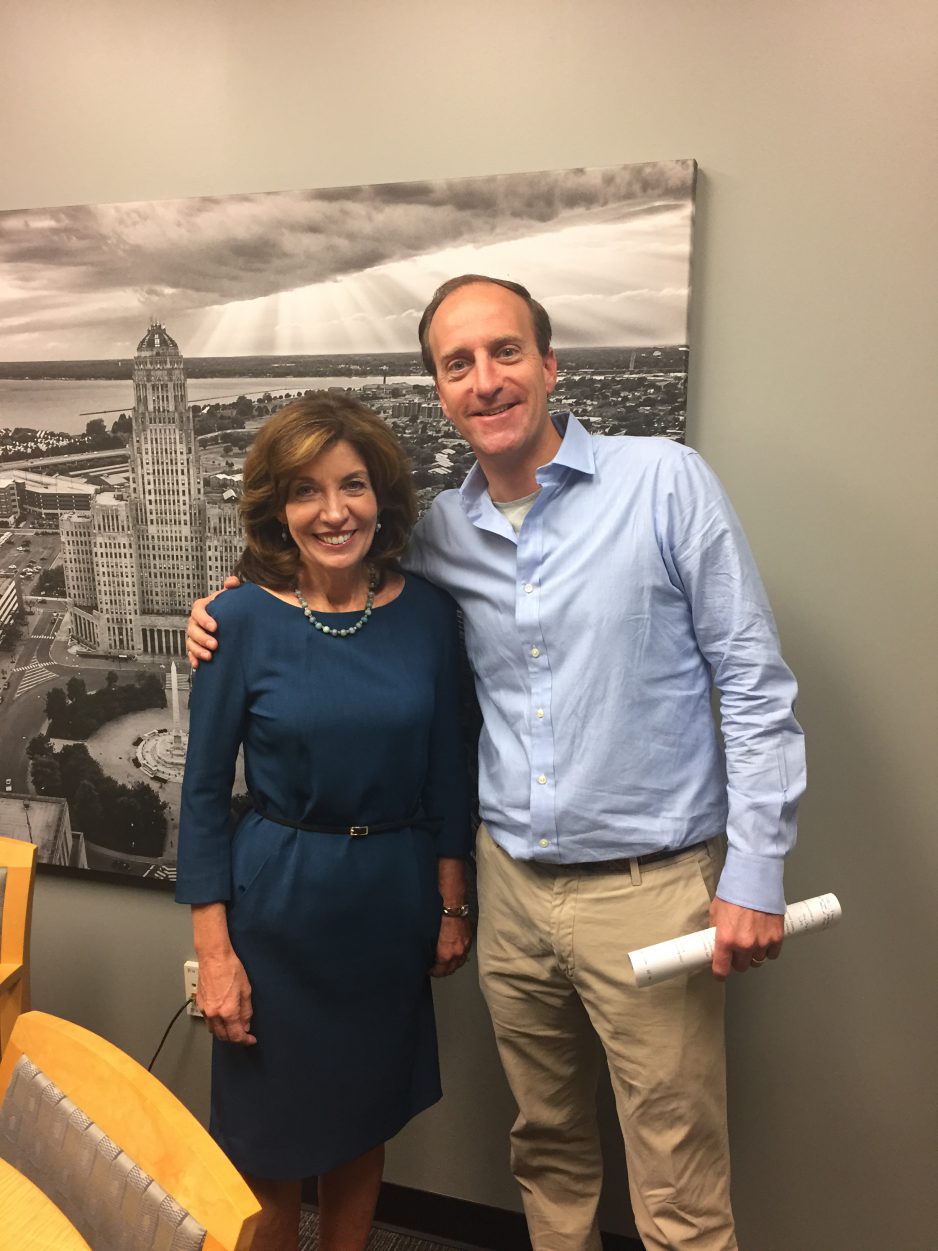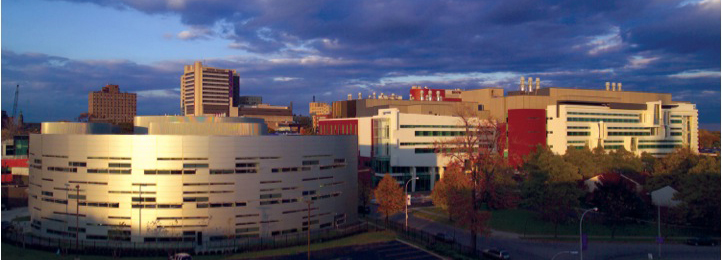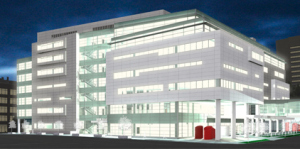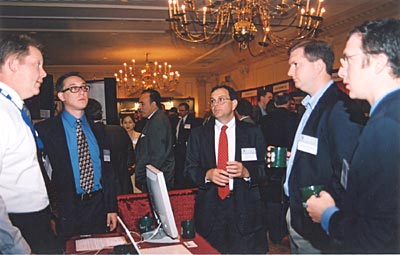The cooperation and recent track record of Buffalo’s economic development efforts has caught the eye of an unlikely source of investment capital: national charitable foundations.
Lured to the city by the Community Foundation for Greater Buffalo, executives from several deep-pocketed nonprofits want to put their vast dollars to work in one of the nation’s most downtrodden cities as it undergoes what many see as a revival.
They say they are intrigued by the new sense of public and private-sector teamwork in the region, and are considering targeted investments in key projects to improve the economy and quality of life. The goal is to create conditions that encourage the growth of small businesses and jobs, so individuals and families can earn more money and accumulate wealth.
The foundations are eying the components of the regional economic development plan – such as technology manufacturing and medical research – as the mechanism to do it.
“We are very impressed with the cooperation and the intergovernmental and public-private partnerships that have already been developed in Buffalo and the surrounding area,” said Frank Altman, founder, president and CEO of the Community Reinvestment Fund (CRF), one of the national groups. “We just think there is a real opportunity to get behind that.”
The foundations want to invest from their core holdings in projects, businesses and initiatives, hoping to make a greater impact on the community. Projects may include building new and improved housing, fostering the creation of new jobs, training workers, supporting new businesses, and encouraging environmental and social initiatives.
Representatives of eight national foundations and three national investment firms gathered in Buffalo for a daylong summit in June with 50 attendees in all, and officials hope to build on that in the fall.
Specific opportunities that the Community Foundation is pitching include:
• Training programs for jobs that pay “family-sustaining” wages
• Investing in businesses in “economically distressed communities”
• Buying government bonds
• Investing in companies with “strong environmental records”
• Offering credit to a local land trust to buy land for preservation
• Buying and developing commercial or mixed-use properties in specific areas
Investors were particularly interested in the new Advanced Manufacturing Institute and companies participating in the 43North business plan competition, according to Community Foundation.
The foundations expect to earn enough on their investments to sustain their holdings.
“We’re a community that’s really on the move in terms of economic development, and these investors are coming to town to meet with local economic development leaders to begin the conversation of opportunities where they can put capital to work in the local community,” said Clotilde Perez-Bode Dedecker, president and CEO of the Community Foundation, which is spearheading the effort and coordinating the partners along with the F.B. Heron Foundation.
“It’s clearly about economic development, but it’s not about grants,” she said. “These foundations are coming in to look for opportunities in which they can invest their actual endowment.”
That would bring significantly more outside dollars into the community to leverage local money. And it could add to the national attention that Buffalo is gaining from the state’s Buffalo Billion economic development initiative, the growth of the Buffalo Niagara Medical Campus and the University at Buffalo, and the surge in development.
“The word is getting out about Buffalo as an up-and-coming city and this is validation of that,” said Dottie Gallagher-Cohen, CEO of the Buffalo Niagara Partnership. “What I see with this is tremendous horsepower in capital.”
Broader focus
“Mission-related” or “impact” investing is a change for philanthropic organizations long focused on social, environmental and economic change through grants and donations. Philanthropic leaders have concluded that the challenges facing many communities and families are so serious they have to shift gears to make more of an impact.
“Poverty is not marginal anymore. It’s not if we help someone get access to a loan, they can buy a house. If they don’t have a job, having access to a loan is not good, and owning a house is not always good, either,” said Clara Miller, president of the $300 million F.B. Heron Foundation in New York, which seeks to address poverty and related issues through socially responsible investments.
“So we said maybe we should go farther down the food chain and say how can we intervene to make sure people have jobs,” she said.
Nonprofit charitable foundations are required by the Internal Revenue Service to spend at least 5 percent of their total return each year. Heron, for example, has provided a $1.5 million grant to the Buffalo Niagara Medical Campus.
“BNMC offers one of the most tangible and inclusive expressions of successful economic development and job creation in an ex-industrialized American city,” Heron says on its website. “Anchor institutions, the historically low income surrounding neighborhoods, and community groups are all at the table.”
The newer concept calls for charitable organizations to invest their core endowment directly in communities, seeking investments that will generate social or environmental benefits, and still provide market-rate or near-market-rate returns. That could include support for job-training or job-creation initiatives, funding a “green” economy, small business financing or loan guarantees, private-equity stakes in companies, or investments in stock, bonds or even commercial and residential real estate development.
“This is very new to our community, this whole concept,” Dedecker said. “It’s a powerful opportunity for our community at this time.”
Besides Community Foundation, Heron of New York City and Minneapolis-based CRF, participants include Florida-based Community Capital Management, New York-based National Development Council, EKO, Hitachi Foundation of Washington, D.C., the Kresge Foundation of Detroit and George Soros’ Open Society Foundation of New York. Ford Foundation, MacArthur Foundation and New Island Capital have also been contacted.
The organizations have engaged in similar work in cities across the country, including Chicago, Boston and Cleveland, and their focus ranges from jobs and business development to the environment and housing.
For example, besides grants, Heron also has issued loans, bought debt or made private-equity investments in businesses and communities through funds in California, the San Francisco Bay Area, northwest Louisiana, Boston, New Hampshire and the Appalachian region. Another nonprofit that is not involved here, the Minneapolis Foundation, provided a $1 million working capital loan fund through another nonprofit to enable minority- and women-owned businesses to participate in the construction of a new football stadium for the Vikings.
“The for-profit sector looks for places that are already on the way up and make a lot of money from doing that. The philanthropic sector has a different model,” said Mark Popovich, vice president of programs at Hitachi Foundation, which focuses on quality job creation and career advancement, particularly in health care and advanced manufacturing, and on entrepreneurship. “We’re looking at places that aren’t the most vibrant economic communities, because that’s where the opportunities exist to invest with local investors to support change.”
Source:
Epstein, Jonathan D. . (2014 August 24). National foundations investing in Buffalo. The Buffalo News. Retrieved from http://www.buffalonews.com/city-region/national-foundations-investing-in-buffalo-20140824













